All Training Courses
-
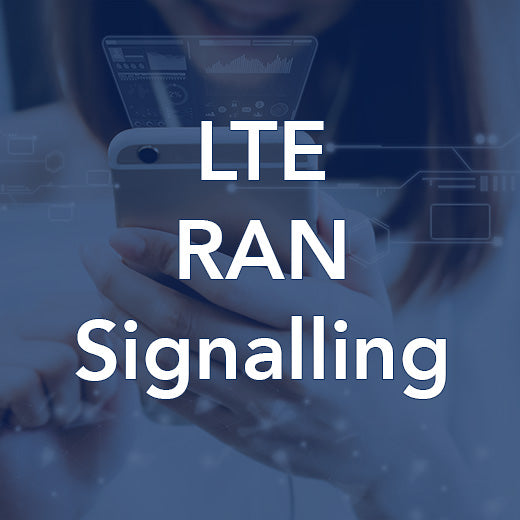
LTE RAN Signalling
Our LTE RAN Signalling Training Course is designed for engineers involved in equipment design, operation, optimization, or monitoring of the LTE Radio Access Network. This 1-day course provides participants with a comprehensive understanding of LTE signalling protocols and interfaces. Participants are expected to have familiarity with LTE and the LTE RAN, which can be gained from attending our LTE Engineering Overview (LT3600) course. Experience with 2G or 3G air interface signalling systems would also be beneficial. Please note that this course is not suitable for those who have attended the LTE RAN course (LT3603) as it covers similar signalling topics. The course covers essential topics such as LTE Signalling Protocols and Interfaces, S1 Interface Messages and Procedures, and X2 Interface Messages and Procedures. By the end of the training, participants will have a solid foundation in LTE RAN signalling, enabling them to effectively design, operate, optimize, and monitor LTE networks. Who Would Benefit Engineers involved with equipment design, operation, optimization or monitoring of the LTE Radio Access Network. Prerequisites Familiarity with LTE and the LTE RAN is assumed and can be gained from attending the LTE Engineering Overview (LT3600) course. Experience of 2G or 3G air interface signalling systems would be beneficial. This course is not suitable for those who have attended the LTE RAN course (LT3603) as it covers similar signalling topics. Contents LTE Signalling Protocols and Interfaces S1 Interface Messages and Procedures X2 Interface Messages and Procedures
POA: Private Course
-

LTE RAN Capacity Planning
Our LTE Security Training Course offers a comprehensive overview of the security measures implemented in LTE networks. This course covers topics such as LTE Authentication and Key Agreement (AKA) procedures, Non-Access Stratum, Access Stratum, Access Network, and Core Network security. Engineers, managers, and other professionals looking to gain a technical understanding of LTE network security will benefit from this course. It is also suitable for individuals in the broader technical community who need to grasp the security protocols used in cellular networks. Participants are expected to have prior knowledge of LTE networks, either through attending our LTE Engineering Overview course (LT3600) or possessing equivalent basic LTE knowledge. Familiarity with legacy 2G and 3G security procedures, as well as a basic understanding of LTE network architecture and functionality, would be advantageous. Join us for this training to delve into security threats and mitigations, 3GPP security strata, authentication processes, key agreement procedures, security algorithms, and more. Upgrade your skills and stay ahead in the dynamic world of LTE security with our expert-led training. Who would benefit This course is designed for engineers working for network operators in the planning and implementation of RANs. Prerequisites This course assumes an engineering background, as well as a good understanding of LTE. Topic Areas Include E-UTRAN architecture and protocols EPS bearers and QoS Subscriber traffic profiling Signalling event traffic modelling Signalling events and event dimensioning RAN synchronization options and overheads Dimensioning O&M Air interface structure and bandwidth options Maximum theoretical throughput estimations Dimensioning the RAN for voice traffic CQI and user plane traffic dimensioning
POA: Private Course
-

LTE Radio Access Network
Our LTE Radio Access Network training course provides a comprehensive technical overview of the Radio Access Network (RAN) for LTE systems. This course covers topics such as E-UTRAN architecture, configuration options, security functions, core network interactions, and bearer establishment procedures. Engineers involved in transmission, architecture design, optimization, network management, or monitoring of the LTE RAN will benefit from this course. Participants are expected to have an engineering background with some knowledge of telecommunications technologies and protocols. Experience with 2G or 3G systems would also be beneficial. The course includes in-depth discussions on E-UTRAN architecture and interfaces, frequency bands and channels, cell structures, handover management, security functions, and more. Practical exercises are included to enhance learning and understanding of the material. Join us to gain valuable insights into LTE RAN technologies and enhance your skills in managing and optimizing LTE networks. Don't miss this opportunity to expand your knowledge and expertise in the field of LTE radio access networks. Who would benefit Engineers involved with transmission or architecture design, optimization, network management or monitoring of the LTE RAN. Prerequisites An engineering background with some knowledge of telecommunications technologies and protocols is assumed. Experience of 2G or 3G systems would be beneficial. Topic Areas Include E-UTRAN architecture and interfaces E-UTRAN frequency bands and channels Cell structures, hierarchies and sizes LTE cell site configurations Tracking Areas (TA) and TA list management Handover management E-UTRAN Self Optimizing Network (SON) functions Access stratum and access network security Interaction between eNB and MME/S-GW devices Logical and physical connectivity to EPC nodes LTE E-UTRAN and small cell deployments Relay nodes, LIPA, SIPTO and LPP S1AP (S1 Application Protocol) message structures and operation X2AP (X2 Application Protocol) message structures and operation Connection establishment Overview of interaction between E-UTRAN protocols during basic LTE procedures Includes exercises.
POA: Private Course
-
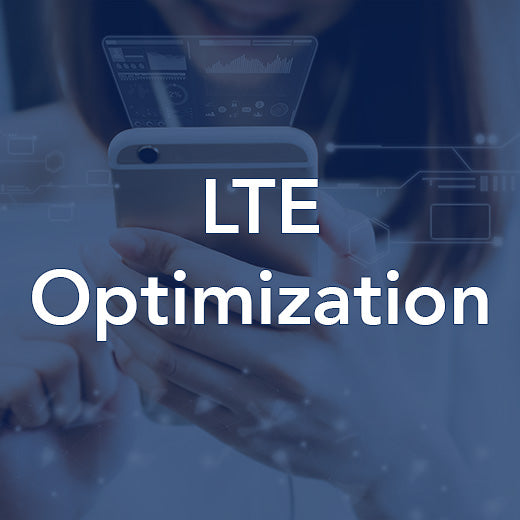
LTE Optimization
Course Code: LT1001 Course Summary An introduction to the principles and techniques that relate to the parameters available in the LTE Radio Access Network (RAN). This includes cell configuration, idle mode parameters and connected mode parameters. All elements are reinforced through classroom exercises and tool demonstrations. Who would benefit This course is intended for experienced radio access optimizers and those involved with device development or functionality testing for LTE-based networks. Prerequisites This course assumes an engineering background with some knowledge of digital radio systems in general and good knowledge of the LTE air interface structure and operation. Experience of parameter tuning for 2G or 3G systems would be useful. Topic Areas Include Radio spectrum and radio channel organization Key LTE radio metrics Interpreting drive survey results Identifying key air interface parameters Verifying settings for radio parameters Performance of a single frequency network Network access parameters Cell selection and reselections Inter-technology cell reselections Prioritized cell reselections Connected mode measurements Triggered measurement reports LTE handovers Analysing handovers Inter-technology handovers Management of discontinuous reception Includes exercises.
POA: Private Course
-
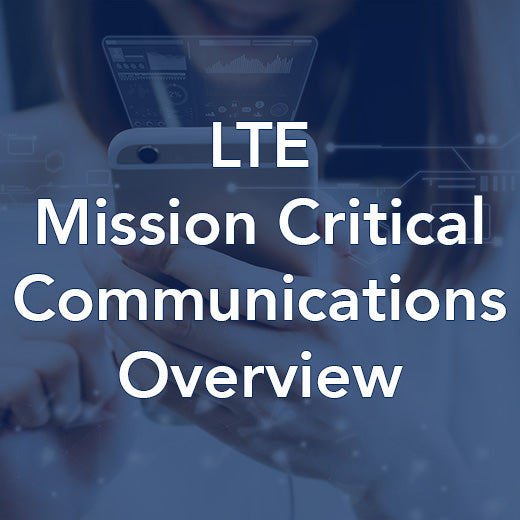
LTE Mission Critical Communications Overview
LTE Mission Critical Communications Overview Training Course is designed for members of the emergency services, network operators, and individuals seeking a comprehensive understanding of how LTE technology can support Mission Critical Communications. This course is ideal for those with a technical background or a foundation level of understanding in the field of telecommunications. Participants will delve into topics such as the requirements of a Mission Critical Network, an introduction to LTE, the LTE Radio Interface, Mission Critical Push to Talk (MCPTT), and Proximity Services (ProSe). By the end of the course, attendees will have a solid grasp of how LTE technology can enhance and support critical communications in various scenarios. Join us for this informative and practical training course to gain valuable insights into LTE Mission Critical Communications and how it can revolutionize communication systems for emergency services and network operators. Don't miss this opportunity to expand your knowledge and skills in this crucial area of telecommunications. Who Would Benefit This course benefits members of the emergency services; network operators and those seeking an overall description of how LTE can support Mission Critical Communications. Prerequisites The course is intended for those with a technical background or foundation level of understanding in telecommunications. Course Contents Requirements of a Mission Critical Network Introduction to LTE The LTE Radio Interface Mission Critical Push to Talk (MCPTT) Proximity Services (ProSe)
£980.00
-

LTE Engineering
Course Code: LT3600 Course Summary A technical introduction and overview of LTE and LTE-Advanced, including the air interface, radio access network, core network and other key associated technologies. Who would benefit This course is intended for engineers either new to, or already working in, mobile communications. Prerequisites Familiarity with telecommunications and general engineering terminology is assumed and some understanding of 2G and 3G cellular systems would be beneficial. Topic Areas Include High level architecture of LTE Basic principles of OFDMA and SC-FDMA Air interface protocol stack Structure of the air interface physical layer E-UTRAN architecture, interfaces and protocols EPC architecture, interfaces and protocols LTE state diagrams Principles of bearers and Quality of Service (QoS) Voice options for LTE Power-on procedures UE procedures in idle and connected modes Enhancements in LTE-Advanced Also available as a Self-Study Online Learning Programme, learn more.
POA: Private Course
-
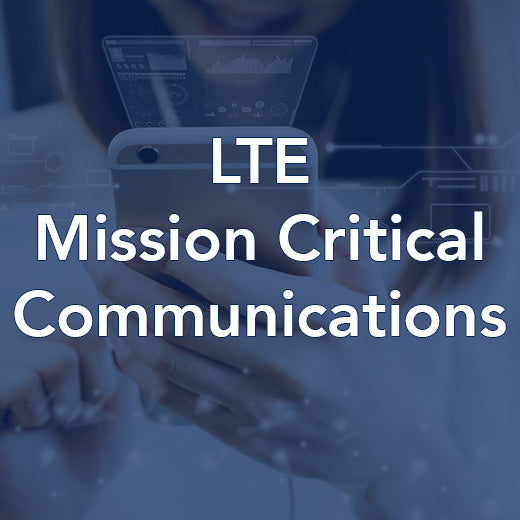
LTE Mission Critical Communications
LTE Mission Critical Communications training course is essential for individuals working with emergency services or government agencies who are looking to familiarize themselves with the technology set to replace LMR systems. This 2-day course covers a range of topics including the requirements of a Mission Critical Network, introduction to LTE, LTE Radio Interface, Multimedia Broadcast Multicast Service, and more. Participants will benefit from gaining a deeper understanding of LTE technology and its applications in mission critical communications. While a basic knowledge of LMR systems is advantageous, a strong familiarity with the requirements of emergency service communications is more important for this course. By the end of the training, attendees will be equipped with the knowledge and skills needed to navigate the transition from LMR to LTE systems effectively. Join us for the LTE Mission Critical Communications training course to stay ahead of the curve in the evolving landscape of emergency communication technologies. Enhance your expertise in LTE, MCPTT, MCVideo, MCData, and more, and be prepared for the future of mission critical communications. Who Would Benefit LTE Mission Critical Communications training course is aimed at those who are working with the emergency services or government agencies wishing to become familiar with the technology planned to replace LMR systems . Prerequisites A basic understanding of LMR systems would be advantageous but familiarity with the requirements of emergency service communications is more important. Course Contents Requirements of a Mission Critical Network Introduction to LTE The LTE Radio Interface Multimedia Broadcast Multicast Service The IP Multimedia Subsystem (IMS) Group Communication System Enablers for LTE (GCSE_LTE) Mission Critical Push to Talk (MCPTT) Mission Critical Video (MCVideo) Mission Critical Data (MCData) LTE and LMR Interworking
POA: Private Course
-
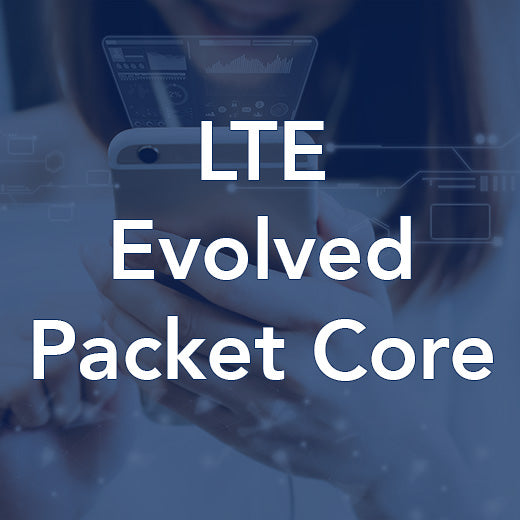
LTE Evolved Packet Core Network
Our LTE Evolved Packet Core Network Training Course is designed to provide a comprehensive technical understanding of the Evolved Packet Core (EPC) for LTE systems. In this course, participants will learn about EPC architecture, interfaces, service provision concepts, application of IP technologies, overall protocol architectures, and optionally, a review of IMS functionality Engineers and other staff involved with switching or transmission architecture, optimization, network management, network testing, or monitoring of the EPC would greatly benefit from this training. Participants are expected to have an engineering background with some knowledge of core network technologies, including IP. Experience with 2G or 3G systems would also be beneficial for a better understanding of the course material. The course covers a wide range of topic areas, including the high-level architecture of LTE, functions of key EPC components like MME, S-GW, PDN-GW, HSS, and PCRF, LTE state diagrams, inter-operation with 2G, 3G, and non-3GPP networks, voice options for LTE, principles of bearers and Quality of Service (QoS), data transport in the EPC, policy and charging control architecture, IETF and 3GPP protocols in the EPC, power-on procedures, UE procedures in idle and connected modes, enhancements in LTE-Advanced, and optionally, an overview of the functions and architecture of the IMS. Who would benefit Engineers and other staff involved with switching or transmission architecture, optimization, network management, network testing or monitoring of the EPC. Prerequisites An engineering background with some knowledge of core network technologies, including IP, is assumed. Experience of 2G or 3G systems would be beneficial. Topic Areas Include High level architecture of LTE Functions of the MME, S-GW, PDN-GW, HSS and PCRF LTE state diagrams Inter-operation with 2G, 3G and non-3GPP networks Voice options for LTE Principles of bearers and Quality of Service (QoS) Data transport in the EPC Policy and charging control architecture IETF protocols in the EPC, including SCTP, DiffServ and Diameter 3GPP protocols in the EPC, including GTP and S1-AP Power-on procedures UE procedures in idle and connected modes Enhancements in LTE-Advanced [Optional] Overview of the functions and architecture of the IMS Also available as a Self-Study Online Learning Programme, learn more.
POA: Private Course
-
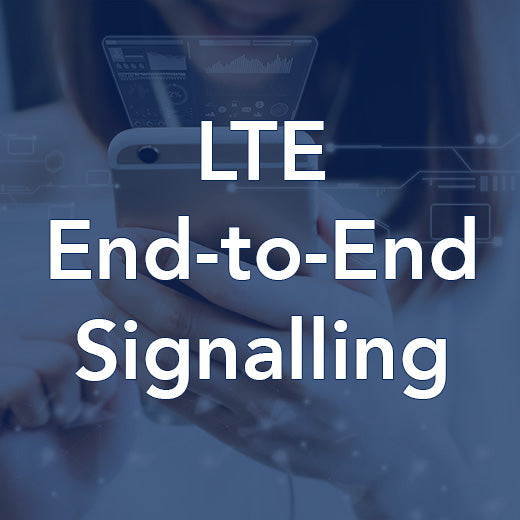
LTE End-to-End Signalling
This course is designed to provide an end-to-end view of the whole set of signalling messages that support some of the most fundamental LTE network operations, such as: initial attach, PDN Connectivity, EPS Bearer setup, bearer resource allocation, handover and detach. Each procedure is presented in terms of the progression of signalling messages exchanged and each message is explored in detail. The course provides details of messages belonging to the following signalling protocols: RRC, NAS, S1AP, X2AP, GTPv2-C and also the Diameter S6a, S13 and Gx applications. Our LTE End-to-End Signalling Training Course (Course Code: LT1301) offers a comprehensive overview of the signalling messages involved in key LTE network operations. From initial attach to handover and detach procedures, participants will gain a deep understanding of the signalling protocols including RRC, NAS, S1AP, X2AP, GTPv2-C, and Diameter S6a, S13, and Gx applications. This course is ideal for engineers, managers, and personnel seeking a technical overview of the complete LTE signalling environment, providing valuable insights into the management of fundamental LTE procedures. Participants in this course will benefit from a detailed exploration of air interface signalling protocols, E-UTRAN signalling protocols, and EPC signalling protocols. Topics covered include initial attach procedures, idle mode procedures, connected mode procedures, handover procedures, and detach procedures. Prerequisites include a basic understanding of LTE network architecture, services, and protocols, which can be acquired through our LTE Engineering Overview and LTE Evolved Packet Core Network (LT3604) courses. An understanding of IP would also be beneficial for participants. Gain the knowledge and skills needed to navigate the complexities of LTE signalling protocols and procedures, and enhance your expertise in managing LTE network operations effectively. Who would benefit This course is designed for engineers, managers and other personnel who have a need to acquire a technical overview of the total LTE signalling environment (not just signalling in one part of the network) and also those that require an end-to-end view of the management of fundamental LTE procedures. Prerequisites A basic understanding of LTE network architecture, services and protocols, which can be gained from attending the LTE Engineering Overview (LT3600) and LTE Evolved Packet Core Network (LT3604) courses. An understanding of IP would be beneficial. Topic Areas Include Air interface signalling protocols E-UTRAN signalling protocols EPC signalling protocols Initial attach procedures Idle mode procedures S1 release Tracking area update procedure Service request procedure with ISR enabled Extended service request for CS fallback Connected mode procedures Connection establishment, modification and release Bearer resource allocation triggering dedicated EPS bearer establishment Bearer resource modification triggering EPS bearer modification PDN connectivity request Handover procedures X2-based handover with direct forwarding S1-based handover with S-GW change with indirect forwarding Inter-System PS handover to UMTS/HSPA without forwarding Detach procedures Also available as a Self-Study Online Learning Programme, learn more.
POA: Private Course
-

LTE Billing and Charging
Our LTE Billing and Charging Training Course provides a comprehensive technical overview of the billing and charging architecture specifically designed for 4G LTE networks. Participants will gain insights into LTE bearer, traffic flow, and Quality of Service (QoS) concepts, as well as an in-depth understanding of the architecture of both online and offline billing systems. Key nodes, interfaces, and protocols used for transporting billing and charging information will be explored, along with the interactions with the billing system during basic LTE procedures. This course is ideal for engineers, designers, managers, and individuals involved in the development, deployment, or operation of LTE billing and charging systems. Familiarity with the LTE Evolved Packet Core is assumed, and experience with 2G or 3G billing systems would be beneficial. Topics covered include EPS bearer concepts, LTE QoS models, packet flows, deep packet inspection, policy and charging control, flow-based charging, billing architecture, charging data capture points, protocols (Diameter, CAP), interfaces (Gy, Gz, Rf, Ro), charging criteria, CDR formats, CDR generation, and charging interaction with basic LTE procedures. Join us for this informative and practical training session to enhance your knowledge and skills in LTE billing and charging. Who would benefit Engineers, designers, managers and others involved in the development, deployment or operation of LTE billing and charging systems. Prerequisites Familiarity with the LTE Evolved Packet Core is assumed. Experience of 2G or 3G billing systems would be beneficial. Topic Areas Include Review of EPS bearer concepts and LTE QoS models Packet flows, service data flows and traffic flow aggregates Deep packet inspection – heuristic algorithms and bearer-aware applications Outline of policy and charging control LTE billing and charging concepts Flow-based charging Billing architecture Online and offline charging systems Charging data capture points (S-GW, PDN-GW) IMS charging capture points Charging Data Function (CDF) Protocols – Diameter, CAP Interfaces – Gy, Gz, Rf, Ro and others Charging criteria – time-based, volume-based, application-based CDR formats CDR generation Charging interaction with basic LTE procedures
POA: Private Course
-
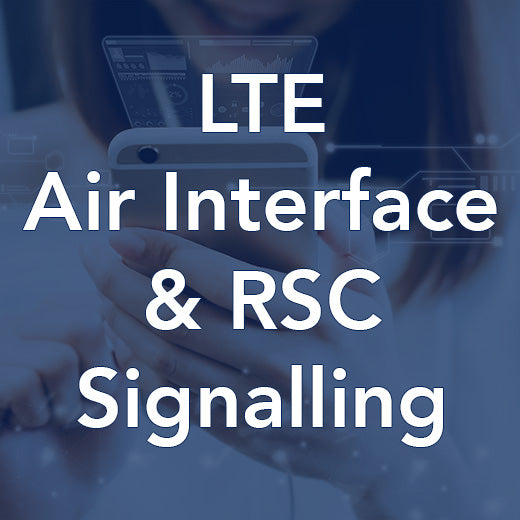
LTE Air Interface and RRC Signalling
Course Code: LT1405 Course Summary A detailed technical description of the air interface signalling protocols employed in LTE. This includes the layer 3 Radio Resource Control (RRC) and layer 2 Packet data Convergence Protocol (PDCP), Radio Link Control (RLC) and Medium Access Control (MAC) protocols. The set of messages and functions supported by each protocol is examined in detail. Who would benefit This course would benefit engineers involved with equipment design, operation, and optimization or monitoring of the LTE radio link. Prerequisites An engineering background with some knowledge of digital radio systems and general radio principles and techniques is assumed. A basic understanding of LTE and experience of 2G or 3G systems would be beneficial. Topic Areas Include RRC - functions and procedures LTE RRC identities and states RRC message structure and ASN.1 Overview of RRC message types System information messages Paging RRC connection management Intra-E-UTRAN and Inter-system Mobility RRC security Security mode command Measurement DL/UL information transfer PDCP control messages RoHC configuration and control RLC control messages, ARQ management and segmentation MAC control elements End-to-End air interface signalling procedure examples
POA: Private Course
-
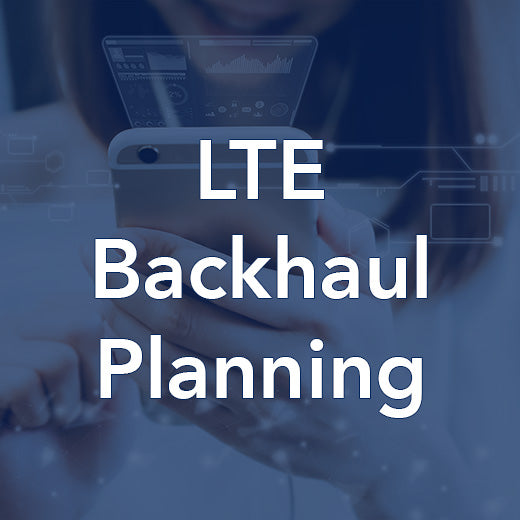
LTE Backhaul Planning
This course provides a detailed overview of the issues related to the planning of backhaul services designed to support 4G LTE Cellular sites in both dedicated and single Radio Access Network (RAN) environments. The course focuses on planning techniques related to the most commonly-employed backhaul technologies used in conjunction with LTE, such as Ethernet, packet-based microwave and IP. It also covers aspects such as timing and security solutions and presents techniques that can be employed to estimate backhaul requirements and plan for suitable deployments. Join our LTE Backhaul Planning Training Course to gain a comprehensive understanding of the planning techniques and technologies essential for supporting 4G LTE Cellular sites. This course is designed for engineers working for network operators involved in the planning and implementation of RANs, specifically focusing on the backhaul region from the cell tower back to the core network. You will learn about backhaul technologies such as Ethernet, packet-based microwave, and IP, as well as timing and security solutions crucial for LTE deployments. Our 1-day course covers topics including backhaul overview, defining 4G backhaul requirements, transport network evolution, synchronization options, VLAN management, and more. By the end of the training, you will be equipped with the knowledge and skills to estimate backhaul requirements, plan suitable deployments, and ensure efficient backhaul solutions for 4G LTE networks. No specific prerequisites are required for this course, making it accessible to a wide range of professionals in the telecom industry. Sign up now to enhance your expertise in LTE backhaul planning and stay ahead in the rapidly evolving telecommunications sector. Who would benefit This course is designed for engineers working for network operators in the planning and implementation of RANs and in particular the backhaul region from the cell tower back to the core network and are looking at the options that exist to provide backhaul solutions suitable for 4G LTE networks. Prerequisites No specific prerequisites for this course although a good understanding of mobile networks and in particular the radio access part of 3GPP based networks. Topic Areas Include Backhaul overview Backhaul planning techniques Defining 4G backhaul requirements Backhaul technologies appropriate for 4G networks Transport network evolution Multi RAT and Multi Operator (MRMO) Synchronization options Cell throughput expectations Industry initiatives and forums Radio to transport QoS mapping VLAN management Backhaul traffic profile Backhaul QoS Planning exercise – cell throughput calculations
POA: Private Course
-
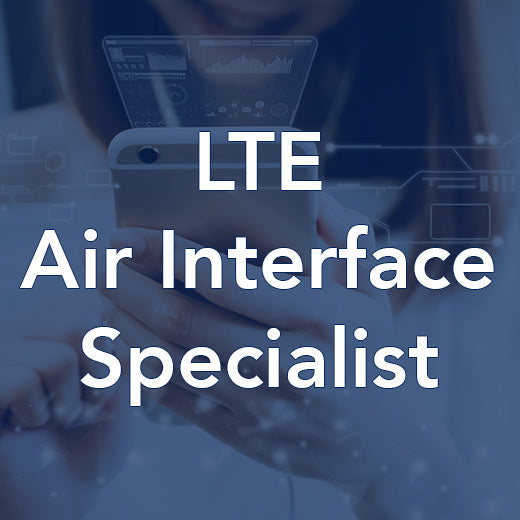
LTE Air Interface Specialist
Course Code: LT1302 Course Summary This course provides a deeper insight into the inner workings of the LTE air interface physical layer to meet the needs of air interface specialists. It offers an opportunity to look more deeply into topics such as OFDMA and SC-FDMA, specifically into the use of Fourier Transform methods and the construction and use of the Cyclic Prefix. The use of Zadoff-Chu sequences for some physical layer functions is also discussed, as are topics such as Reference Signals and the construction, administration and use of LTE physical channels. Who would benefit This course is designed for Radio Frequency (RF) engineers, radio planners, technical support staff and other specialists who have a need to look further into the LTE Air Interface than is possible with less specialised courses. Prerequisites A thorough understanding of the basic and more complex principles of the LTE Air Interface is essential and can be gained from attending Wray Castle’s ‘LTE Engineering Overview’ and ‘LTE Air Interface’ courses. Topic Areas Include OFDMA subcarrier orthogonality OFDMA fourier transform functions Physical signals and Zadoff-Chu modulation sequences SC-FDMA Downlink and Uplink physical carrier configuration Reference signal generation and functions Downlink physical channels: PBCH, PCFICH, PHICH, PDCCH Downlink concepts: REG, CCE, Aggregation Levels, PDCCH Search Spaces PUCCH operation PUCCH resources, regions, formats and operation Downlink Control Information (DCI) and Uplink Control Information (UCI) types and functions PRACH resources, formats, configurations and operation
POA: Private Course
-
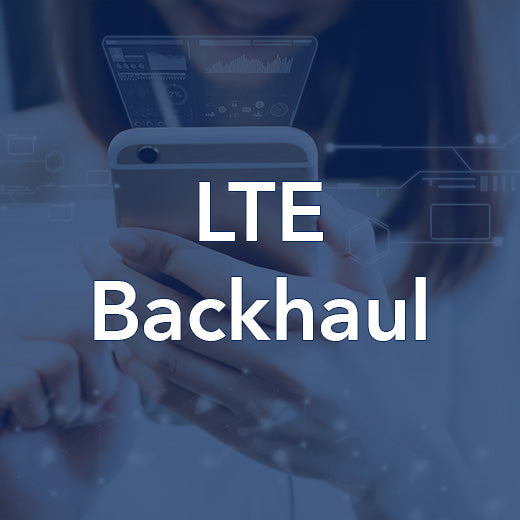
LTE Backhaul
A detailed technical description of the technologies available to be used to support the backhaul requirements of next generation 4G LTE access networks. This includes discussions of underlying backhaul architecture and concepts along with more detailed discussions of the technologies employed to support evolved Radio Access Networks (RANs), including: Carrier Ethernet, MPLS, fibre-optic transmission and packet-based microwave plus other high capacity backhaul technologies. Our LTE Backhaul Training Course (Course Code: LT1202) offers a comprehensive overview of the technologies essential for supporting the backhaul requirements of next-generation 4G LTE access networks. This course dives into the underlying backhaul architecture and concepts, as well as the technologies utilized to support evolved Radio Access Networks (RANs), including Carrier Ethernet, MPLS, fiber-optic transmission, packet-based microwave, and other high-capacity backhaul technologies. Ideal for engineering and technical management professionals involved in the commissioning, design, deployment, or operation of mobile backhaul networks, this course covers a range of topic areas such as backhaul definitions, transport network layered architectures, RAN architectures and requirements, industry forums, and various backhaul options at Layers 1, 2, and 3. Participants will also explore synchronization, redundancy, security options, and Next Generation Mobile Network (NGMN) models, providing a comprehensive understanding of LTE backhaul technologies. By enrolling in our 1-day LTE Backhaul Training Course, participants will gain valuable insights into the latest technologies and best practices for optimizing backhaul networks in the era of 4G LTE. Whether you are looking to enhance your technical knowledge or stay ahead of industry trends, this course is designed to equip you with the skills and expertise needed to excel in the fast-paced world of mobile backhaul networks. Who would benefit This course is suitable for engineering and technical management staff who are involved in the commissioning, design, deployment or operation of mobile backhaul networks. Prerequisites An understanding of mobile network architecture and operation would be beneficial as would an appreciation of legacy backhaul technologies such as TDM or ATM. Topic Areas Include What is backhaul? Transport network layered architectures RAN architectures and requirements Industry forums Layer 1 backhaul options Backhaul architecture models Fibre optics and packet-based microwave Layer 2 backhaul options Ethernet and 802.1Q VLANs Q-in-Q VLAN stacking Carrier Ethernet MPLS Layer 3 backhaul options IP RAN in LTE Synchronization (NTPv4, IEEE1588v2/PTP, Sync-E) Redundancy (MSTP, G.8031/8032) Security options (IPsec, Security Gateway) Next Generation Mobile Network (NGMN) models VLAN traffic forwarding examples for Ethernet-based RANs
POA: Private Course
-
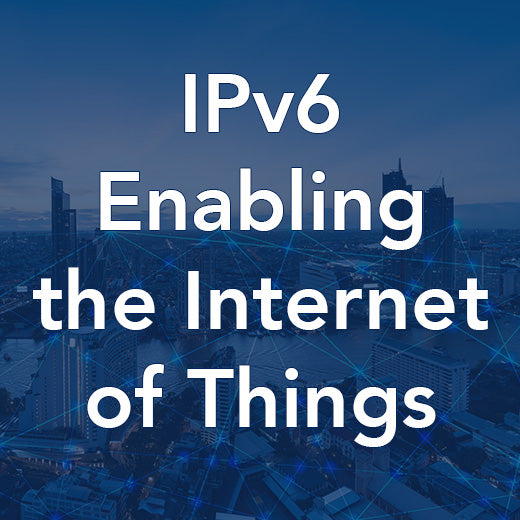
IPv6 Overview: Enabling the Internet of Things (IoT)
This one-day course based on real-life deployments provides a brief look at IPv6 and in particular how this will apply to telecommunications markets from the User Equipment up through the Service Providers networks and out into the internet. All the essential topics, such as IPv6’s new addressing and packet formats; the variety of ways that IP addresses can be allocated to devices and the relevant standards bodies are covered, however, we also look at the new IPv6 messages and ICMPv6 in particular. The course ends with a review of the deployment and transition states that IPv4 and IPv6 networks are likely to evolve. This one-day IPv6 overview training course is designed to provide a comprehensive understanding of IPv6 and its implications for telecommunications markets. From User Equipment to Service Providers networks and beyond, participants will gain insight into IPv6 addressing, packet formats, allocation methods, standards bodies, and deployment strategies. The course also covers new IPv6 messages, ICMPv6, and the transition states of IPv4 and IPv6 networks. Ideal for engineering and technical management staff in both fixed and mobile networks, this course requires no specific prerequisites, although familiarity with IPv4 and related protocols (TCP, UDP, etc.) is beneficial. Participants will explore topics such as the need for IPv6, IPv4 challenges, driving change in the Internet, IPv6 specifications and standards, packet structure, node configuration, functionality, QoS, routing protocols, security features, adoption in the backbone, 3GPP integration, LTE PDN connection IP address allocation, and future developments in IPv6 technology. Who would benefit This course is suitable for all engineering and technical management staff that needs an overview of IPv6 and covers requirements for both fixed and mobile networks. Prerequisites No specific prerequisites are needed although an understating of IPv4 and its related protocol ecosystem (TCP; UDP; etc.) would be of benefit. Topic Areas Include Need for IPv6 IPv4 problems and workarounds Driving change in the Internet IPv6 specifications and standards IPv6 packet structure Minimum node configuration Overview of IPv6 functionality IPv6 packet transmission IPv6 QoS IPv6 routing protocols IPv6 security features Adoption of IPv6 in the backbone IPv6 and 3GPP LTE PDN connection IP address allocation IPv6 and the Internet Further developments
POA: Private Course
-
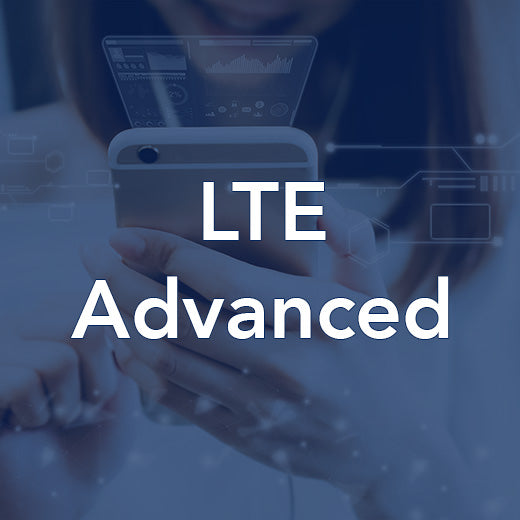
LTE Advanced
This LTE Advanced training course offered by Wray Castle covers essential topics such as an introduction to LTE, carrier aggregation, and additional enhancements in LTE Advanced. With a course code of LT1318, participants can expect to gain a comprehensive understanding of LTE technology and its advanced features. By enrolling in this course, individuals can enhance their knowledge and skills in LTE Advanced, making them more competitive in the telecommunications industry. Whether you are a beginner looking to learn the basics or a professional seeking to stay updated on the latest advancements in LTE technology, this training course offers valuable insights and practical information. Join us at Wray Castle and take your expertise in LTE Advanced to the next level. Course Contents Introduction to LTE Carrier Aggregation Additional Enhancements in LTE Advanced
POA: Private Course
-

IP Workshop
The Internet Protocol (IP) is the key underpinning transmission and switching technology for almost all communication network types and a core skill for telecoms and IT engineers. Theoretical knowledge of how IP networks perform and hands-on experience of how to configure network devices and troubleshoot problems is offered through this intensive five-day course. Delegates work with a state-of-the-art equipment ‘pod’ whilst being led through the key theories. Our IP Workshop Training Course is a comprehensive five-day program designed to provide telecoms and IT engineers with the essential knowledge and hands-on experience needed to excel in the field of IP networking. Participants will work with state-of-the-art equipment pods and learn key theories behind IP networks, router configuration, testing, and troubleshooting. Engineers who want to deepen their understanding of IP protocols and network architecture will greatly benefit from this course. Prior knowledge of TCP/IP is required, which can be obtained by attending our TCP/IP course (QS2501). Throughout the program, participants will cover a range of topic areas including LAN technologies, Cisco equipment and IOS overview, routing protocols, IP access lists, WAN technologies, VLANs, and more. Hands-on practical exercises make up 60% of the course, ensuring that participants gain valuable experience in configuring network devices. Join us for our IP Workshop Training Course and enhance your skills in IP networking. With 10 live online sessions spread over 5 days, this intensive program will equip you with the knowledge and practical experience needed to succeed in the fast-paced world of telecoms and IT engineering. Who would benefit Engineers who require a thorough understanding of IP protocols and network architecture, together with hands-on experience of router configuration, testing and fault finding. Prerequisites A good knowledge of TCP/IP is required. This can be gained by attending Wray Castle’s TCP/IP course (QS2501). Topic Areas Include LAN technologies recap Introduction to Cisco equipment and an overview of Cisco IOS Basic router administrative functions Interface and configuration management Configuring IP addresses to interfaces Routing and routing protocols IP access lists NAT/PAT configuration WANs – Frame Relay, PPP and ISDN Layer 2 switching – VLANs and VLAN trunking Overview of Cisco examination process Includes hands-on practical exercises accounting for 60% of the course.
POA: Private Course
-
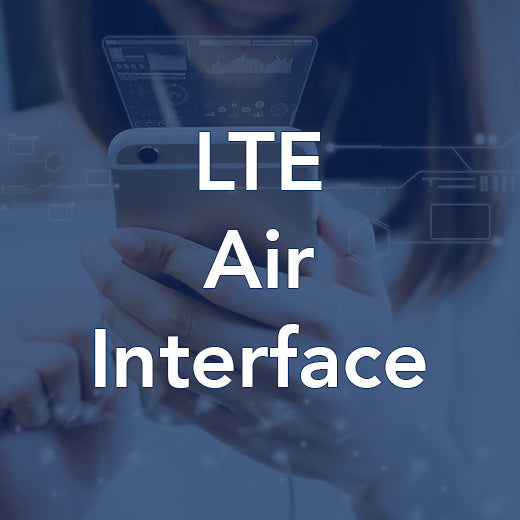
LTE Air Interface
Our LTE Air Interface Training Course is designed to provide a comprehensive understanding of the air interface for LTE radio access. This course covers OFDMA principles, access and non-access stratum protocols, channel structures, connectivity and mobility management procedures, as well as radio link control functions. Engineers involved in equipment design, operation, optimization, or monitoring of the LTE radio link will benefit greatly from this training. Participants are expected to have an engineering background with some knowledge of digital radio systems and general radio principles and techniques. A basic understanding of LTE and experience with 2G or 3G systems would also be beneficial. Topics covered in the course include LTE system architecture, E-UTRAN architecture and interfaces, OFDMA/SC-FDMA basic principles, MIMO concepts and implementation, physical layer structures, access and non-access stratum protocols, and more. Enhance your knowledge and skills in LTE radio access and stay ahead in the rapidly evolving telecommunications industry. Who would benefit Engineers involved with equipment design, operation, optimization or monitoring of the LTE radio link. Prerequisites An engineering background with some knowledge of digital radio systems and general radio principles and techniques is assumed. A basic understanding of LTE and experience of 2G or 3G systems would be beneficial. Topic Areas Include LTE system architecture E-UTRAN architecture and interfaces OFDMA/SC-FDMA basic principles Defining orthogonality OFDMA features and benefits The Fourier transform OFDMA/SC-FDMA transmitter and receiver chains Modulation and coding, MIMO and the Cyclic Prefix MIMO concepts and implementation Physical layer structures Access and non-access stratum protocols Logical, Transport and Physical channels RRC, PDCP, MAC and RLC functions Resource allocation and scheduling strategies LTE-Advanced concepts Lower layer procedures Connection establishment Radio resource management procedures Also available as a Self-Study Online Learning Programme, learn more.
POA: Private Course
-
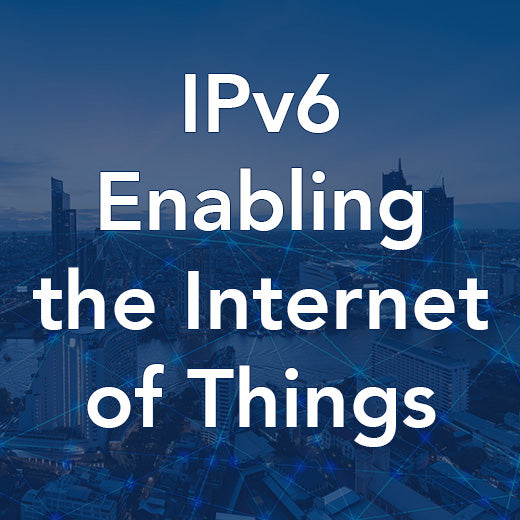
IPv6 Enabling the Internet of Things
This 3-day course provides a detailed look at IPv6 and in particular how this will apply to telecommunications markets from the User Equipment up through the Service Providers networks and out into the internet. All the essential topics, such as IPv6’s new addressing and packet formats; the variety of ways that IP addresses can be allocated to devices and the relevant standards bodies are covered, however, we also look at the new IPv6 messages and ICMPv6 in particular, as well as investigating the numerous deployment options from Dual Stacking through tunnelling techniques and address translation methods. The course ends with a review of the deployment and transition states that IPv4 and IPv6 networks are likely to evolve. In today's rapidly evolving telecommunications landscape, the transition to IPv6 is becoming increasingly crucial. Our 3-day IPv6 Enabling the Internet of Things training course delves deep into the world of IPv6, exploring its applications in telecommunications markets from end-user devices to service provider networks and beyond. Covering essential topics such as IPv6 addressing, packet formats, allocation methods, and relevant standards bodies, this course also delves into advanced concepts like IPv6 messages and ICMPv6, as well as deployment options including Dual Stacking, tunnelling techniques, and address translation methods. Through a series of real-world examples and hands-on labs, delegates will gain practical experience in key techniques such as address translation, IPv6 tunnelling, and NAT64. This course is ideal for IP design, planning, and support specialists in the fixed or mobile telecommunications sector, including design, planning, and operations staff. A basic understanding of IPv4 and related protocols (TCP, UDP, etc.) is recommended as a prerequisite for this course. Don't miss this opportunity to stay ahead of the curve and master the intricacies of IPv6 in today's interconnected world. Who would benefit Those people who specialise in IP design planning, implementation or support would benefit strongly from attending this course, including design, planning and operations staff. This course is aimed specifically at people working for fixed or mobile telecommunications. Prerequisites An understating of IPv4 and its related protocol ecosystem (TCP; UDP; etc.) would be of benefit. Topic Areas Include The need for IPv6 Packet structure IPv6 addressing Address assignment IPv6 functionality Transition and deployment Adoption and development IPv6 exercises
POA: Private Course
-
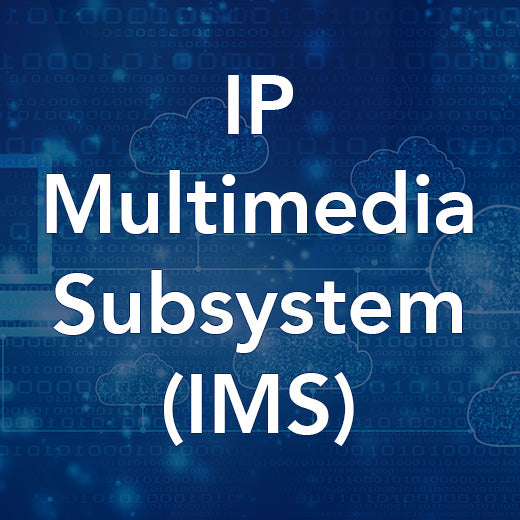
IP Multimedia Subsystem (IMS)
This course provides an understanding of the IP Multimedia Subsystem’s (IMS) role in Next Generation Networking. It provides a detailed description of the IMS architecture including security, charging and Policy and Charging Control (PCC). Additionally it identifies the main protocols associated with IMS including SIP, Diameter and SDP and analyzes their role in the IMS registration and session control procedures. It also provides a brief look at some of the applications enabled by the IMS. Our IP Multimedia Subsystem (IMS) training course is designed to provide a comprehensive understanding of the IMS architecture and its role in Next Generation Networking. Over the course of 2 days participants will delve into the intricacies of IMS, including security, charging, and Policy and Charging Control (PCC). This course also covers the main protocols associated with IMS, such as SIP, Diameter, and SDP, and analyzes their role in registration and session control procedures. Ideal for individuals seeking a thorough understanding of IMS architecture, interfaces, and procedures, this course is perfect for telecom professionals looking to enhance their knowledge and skills in this crucial area. Participants should have a basic understanding of SIP and packet-switched domains in LTE, GPRS, and UMTS networks to fully benefit from this training. Topics covered in this course include IMS framework, protocols for IMS, CSCFs and HSS roles, IMS access mechanisms, application service environment, security aspects, charging, and much more. By the end of the training, participants will have a solid grasp of IMS and its applications in the telecom industry. Who would benefit Those requiring a full understanding of the architecture, interfaces and procedures of the IMS. Prerequisites An understanding of SIP and the packet-switched domains in LTE, GPRS and UMTS networks and their functionality is an advantage. Topic Areas Include What is the IMS and why do we need it? Introduction to the IMS Framework Protocols for IMS IMS architecture, interfaces, operation and procedures Roles of the CSCFs and HSS including AAA procedures IMS access mechanisms and IP address allocation and P-CSCF discovery User subscription profiles, User Identities and Initial Filter Criteria Implicit Registration Sets Application Service (AS) environment Interaction between the CSCFs and the AS environment Circuit Switched interworking The Media Resource Function (MRF) Border Control Functions and gateways IMS Security aspects Online and Offline Charging Policy Control and Charging Analysis of SIP Registration, Originating and Terminating Session Control includes some example Wireshark analysis Emergency call handling IMS Applications
POA: Private Course
-
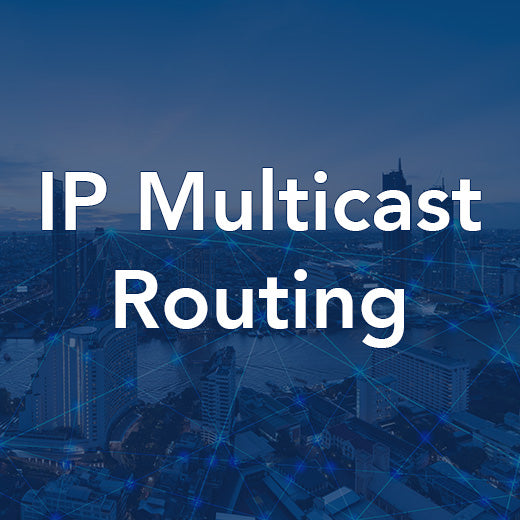
IP Multicast Routing
This is IP multicasting practically carrying an IPTV service using the Protocol Independent Multicast (PIM) and Internet Group Management Protocol (IGMP) protocols. IGMP and PIM are introduced and then PIM Sparse Mode and Source Specific Mode is tested practically using labs. Join our 2-day IP Multicast Routing training course to gain a comprehensive understanding of Protocol Independent Multicast (PIM) and Internet Group Management Protocol (IGMP) protocols. Through practical labs, you will learn how to implement PIM Sparse Mode and Source Specific Mode to deliver IPTV services effectively. This course is ideal for engineers venturing into the realm of IPTV and converged services, providing you with the necessary skills to navigate the complexities of IP multicasting. Prior knowledge of IP protocols, particularly link state protocols like OSPF, is recommended for this course. If you need to brush up on your understanding of these protocols, consider attending our 'OSPF and BGP Routing Protocols' course before diving into IP multicasting. With a focus on hands-on learning, our training sessions will equip you with the expertise needed to configure multicast routing tables, understand IPv4 and IPv6 multicast addressing, and implement multicast services efficiently. Expand your knowledge of IP multicasting and enhance your skill set with our IP Multicast Routing training course. Who would benefit Engineers particularly those entering the world of IPTV and converged services generally would benefit from this Wray Castle course. Prerequisites A good understanding of IP protocols especially link state protocols such as OSPF which can be gained by attending our Wray Castle course ‘OSPF and BGP Routing Protocols – IP1310’ Topic Areas Include What is IP Multicast? IPv4 Multicast Addressing Multicast vs Unicast or Broadcast Routing Multicast Routing Tables Multicast in LANs Internet Group Management Protocol (IGMP) Protocol Independent Multicast (PIM) Multicast Services IPv6 Multicast ICMPv6
POA: Private Course
-
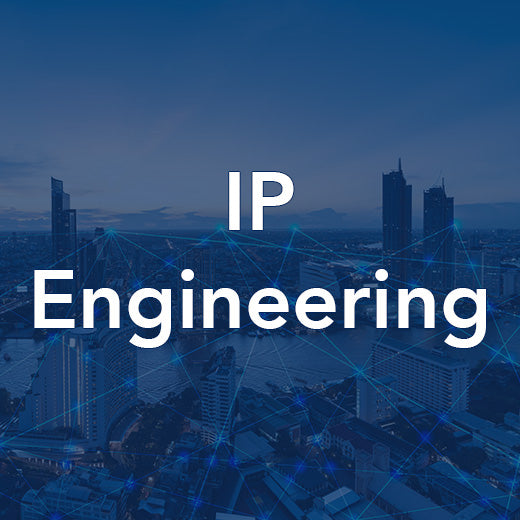
IP Engineering
This course delivers a detailed overview of Internet Protocol networks. Delivering an understanding of Engineering techniques, as well as applications, protocols and switching methods, it enables delegates to work confidently in the IP environment. Other topics explored include QoS, security, VPNS and Multimedia over IP. This IP Engineering training course is designed to provide a comprehensive understanding of Internet Protocol networks, covering engineering techniques, applications, protocols, and switching methods. Participants will gain the knowledge and skills needed to confidently work in the IP environment, with topics including QoS, security, VPNS, and Multimedia over IP. Ideal for those looking to understand how IP networks are designed and implemented, this course is suitable for individuals with some knowledge or experience of packet-switched data network operation and Internet technology. By enrolling in this course, participants will explore a range of topic areas including the background to the Internet and ISPs, IPv6, DNS, MPLS, access services, routing in IP networks, IP QoS technologies, security engineering, IP VPNs, and IP multimedia services. Gain the skills and expertise needed to succeed in the dynamic field of IP engineering with this comprehensive training program. Who would benefit Those needing to understand how IP networks are designed and implemented. Prerequisites Some knowledge or experience of packet-switched data network operation and Internet technology is beneficial. Topic Areas Include Background to the Internet and ISPs The Data Link, IP, Transport and Application layers IPv6 The Domain Name System (DNS) Introduction to MPLS Access services E-mail services and web hosting Name servers Service Provider Network architectures Peering Routing in IP networks Overview of OSPF and BGP4 IP QoS technologies Security engineering IP VPNs IP multimedia services
POA: Private Course
-
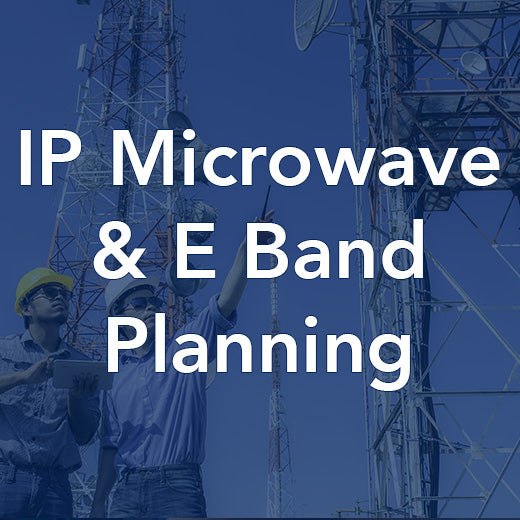
IP Microwave and E Band Planning
This course introduces some of the key techniques used in the latest products related to microwave radio. Topics covered include adaptive modulation; radio link protection and bonding; fixed link MIMO; Internet Protocol (IP) radio; Ethernet QoS management; header compression and split mount; and full outdoor configuration. The course looks at how vendors and network planners are addressing the issues associated with upgrading from legacy microwave technologies (PDH/SDH) to full IP. The emerging E-band technology is discussed in detail, with a particular emphasis on planning E-band links and the technical specifications of a range of equipment from the main vendors. In this comprehensive IP Microwave and E-Band Planning Training Course, participants will delve into the latest techniques and technologies in the field of microwave radio. The course covers a wide range of topics including adaptive modulation, radio link protection, Ethernet QoS management, and the transition from legacy microwave technologies to full IP. Participants will also gain valuable insights into E-band technology, with a focus on planning E-band links and understanding the technical specifications of equipment from leading vendors. This course is ideal for experienced transmission and backhaul engineers, as well as system architects looking to deepen their understanding of fixed broadband radio. A good knowledge of radio principles and familiarity with IP technologies are recommended prerequisites for this training. By the end of the course, participants will have a solid grasp of Ethernet radio, spectrum and regulation, technological developments in fixed link radio, planning IP and E-Band radio links, and timing and synchronization. Who would benefit This course is intended for experienced transmission and backhaul engineers and system architects requiring an in-depth understanding of the evolution of fixed broadband radio. Prerequisites A good knowledge of radio principles would be desirable, as well as an appreciation of IP technologies. Topic Areas Include Ethernet Radio Spectrum and Regulation Technological Developments in Fixed Link radio Planning IP and E-Band Radio Links Timing and Synchronization
POA: Private Course
-

IP Backbone Traffic Engineering
This is a detailed course examining the complexities of IP Backbone traffic engineering techniques. ATM and MPLS are explored as well as looking to the future of traffic engineering. This 2-day IP Backbone Traffic Engineering training course delves into the intricacies of IP backbone traffic engineering techniques, exploring ATM and MPLS while also looking towards the future of traffic engineering. Designed for those looking to gain a comprehensive understanding of backbone traffic engineering for IP networks, this course covers a range of topic areas including traffic engineering overview, techniques, Layer 3 traffic engineering, OSPF and BGP architecture and operation, as well as traffic engineering using OSPF and BGP4. Ideal for individuals with experience in IP engineering and a solid grasp of packet-switched data networks, TCP/IP principles, and ATM, this course offers valuable insights into ATM traffic engineering, IP-over-ATM traffic engineering, MPLS traffic engineering, integrated MPLS-TE approach, the evolution of ATM to MPLS core networks, and Generalized MPLS. Who would benefit Those needing to understand the principles of backbone traffic engineering for IP networks. Prerequisites Experience of IP engineering and an understanding of packet-switched data networks, TCP/IP principles and ATM are beneficial. Topic Areas Include Traffic engineering overview Traffic engineering techniques Layer 3 traffic engineering OSPF architecture and operation BGP and BGP4 architecture and operation Traffic engineering using OSPF and BGP4 ATM traffic engineering IP-over-ATM traffic engineering MPLS traffic engineering Integrated MPLS-TE approach The evolution of ATM to MPLS core networks Generalized MPLS
POA: Private Course
-
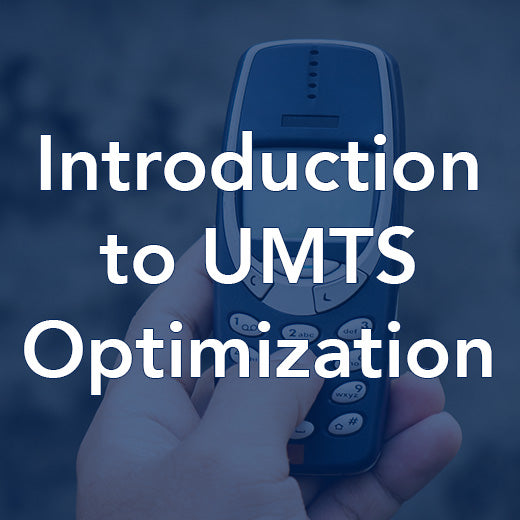
Introduction to UMTS Optimization
Course Code: RP2400 Course Summary This course highlights the differences between optimizing a GSM network and a WCDMA network. The course focuses on the parameters and features which can be used to fine-tune a WCDMA air interface. Who would benefit Those who require an introduction to the principles and techniques that relate to optimizing the UMTS FDD mode Radio Access Network (RAN). Prerequisites An understanding of UMTS air interface operation and an appreciation or experience of UMTS cell planning, or previous attendance on the UMTS Air Interface course (MB2002) and the Cell Planning for UMTS Networks course (MB2005). Topic Areas Include The WCDMA optimization process Identification of optimization opportunities Tools for optimization The coverage-capacity-quality relationship Drive test tools, performance data and statistics management Link budgets Coverage and capacity optimization issues and solutions Repeater solutions Antenna solutions LNA solutions Soft handover solutions RAN configurations and dimensioning Idle mode and system access parameters Connected mode parameters Radio link control parameters UMTS features – HSDPA, MIMO Includes optimization exercises.
POA: Private Course
-
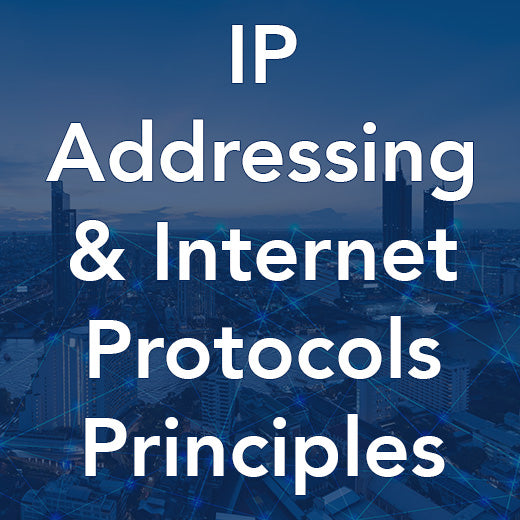
IP Addressing and Internet Protocols Principles
A course designed to give the new IP engineer a grounding in IPv4 Addressing whilst also exploring the typical routing protocols and essential components that will be encountered. The course also looks inside a typical router and explains the workings of the routing or forwarding table. In today's digital age, understanding IP addressing and internet protocols is essential for any engineer entering the world of networking. Wray Castle's IP Addressing and Internet Protocols Principles Training Course, with the course code IP1305, is designed to provide a comprehensive introduction to IPv4 addressing and routing protocols. This course delves into the inner workings of routers, explaining routing tables and essential components that engineers will encounter in their IP-centric roles. Ideal for engineers transitioning into an IP-centric environment, this course covers topics such as subnet masks, TCP/IP suite, IPv6, DHCP, DNS, and routing principles. Whether you need to interpret router outputs or understand the fundamentals of IPv4 addressing, this training course will equip you with the knowledge and skills necessary to navigate the complexities of internet protocols. Prior knowledge of internetworking, Ethernet LANs, and VLANs principles is recommended as a prerequisite for this course. Enhance your understanding of internet protocols and boost your engineering capabilities with Wray Castle's IP Addressing and Internet Protocols Principles Training Course. Who would benefit All engineers who are moving into an IP centric world and need a grounding in the workings of IPv4; especially those that need a grounding in IPv4 addressing and subnet masks as well as needing to interpret output from a typical router. Prerequisites Internetworking, Ethernet LANs and VLANs Principles or equivalent prior knowledge of LANs and Ethernet switching. Topic Areas Include The purpose of routing Building a route table The TCP/IP suite The IP addressing scheme Subnet mask and determination of a packet’s destination IPv6 Dynamic Host Configuration Protocol (DHCP) Domain Name System (DNS) Routing principles Interior and exterior routing
POA: Private Course
-
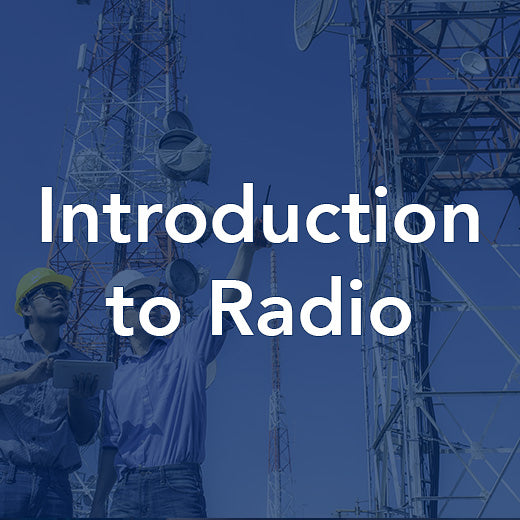
Introduction to Radio
Expand your knowledge of radio technology with our Introduction to Radio Training Course. This one-day course will provide you with a comprehensive understanding of how the radio spectrum is managed, the systems that utilize spectrum, and the technical aspects of radio system design. Whether you are a senior executive, manager, regulator, market analyst, or marketeer in the telecommunications industry, this course is designed to equip you with the knowledge and insights necessary to navigate the complexities of radio spectrum management. Our course covers a wide range of topic areas, including how radio spectrum is regulated, the concepts of bandwidth and channels, antenna characteristics, radio wave propagation mechanisms, and the impact of interference and noise. Additionally, you will gain an overview of various radio systems such as 2G, 3G, and 4G, and explore the factors driving the demand for spectrum. This course is tailored for individuals with no technical background, making it accessible to a diverse range of professionals seeking to enhance their understanding of radio technology. Join us for our Introduction to Radio Training Course and stay ahead of the curve in the ever-evolving world of radio technology. Gain valuable insights into the management and use of radio spectrum, align radio applications to frequency bands, and explore the latest advancements driving the demand for spectrum. Don't miss this opportunity to expand your knowledge and expertise in radio technology. Who would benefit Senior executives, managers, regulators, market analysts and marketeers involved in the telecommunications industry who require an understanding of the wide range of issues surrounding the use and management of radio spectrum. Prerequisites This course is designed for those with no technical background. Topic Areas Include How radio spectrum is managed and regulated How radio spectrum is used The concepts of bandwidth and channels An introduction to the characteristics of antennas Radio wave propagation mechanisms The impact of interference and noise Aligning radio applications to frequency bands Overview of radio systems – including 2G, 3G and 4G What is driving the demand for spectrum? Health and Safety issues
POA: Private Course
-
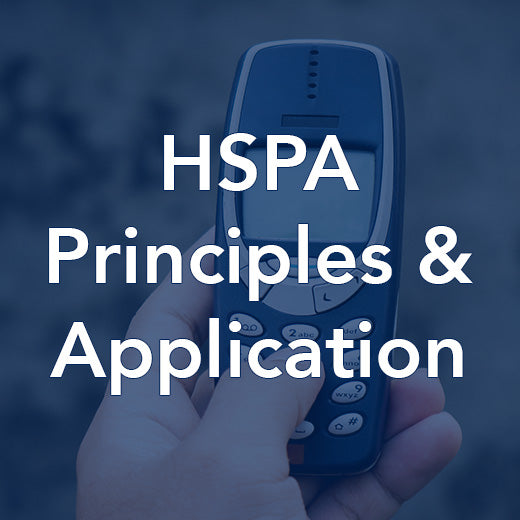
HSPA Principles and Application
This one-day course provides a clear and logically organized explanation of both HSDPA and the E-DCH for both HSPA and the introduction to HSPA+ capabilities. In addition to the comprehensive training course on HSPA principles and applications, participants can expect to gain a deeper understanding of key topic areas such as HSDPA protocol structure, MAC architecture, HSDPA physical layer functions, device categories, and implementation. The course also covers HSUPA protocol structure, channels, physical layer functions, device categories, and the establishment of a HSUPA connection. Participants will also learn about cell change procedures, enhanced uplink protocols, soft handover, and the implications for network design and operation. This one-day course is designed for individuals who require a technical overview of HSDPA and HSUPA, and how these technologies impact network design and operation. Participants should have familiarity with the structure and operation of the UMTS air interface at Release 99 and Release 4, or have previously attended the UMTS Air Interface course (MB2002). By the end of the course, participants will have a clear and logically organized explanation of HSDPA, E-DCH, and an introduction to HSPA+ capabilities, equipping them with the knowledge and skills needed to excel in the field of wireless communication technologies. Who would benefit Those who require a technical overview of HSDPA and HSUPA and the implications for network design and operation. Prerequisites Familiarity with the structure and operation of the UMTS air interface at Release 99 and Release 4, or previous attendance on the UMTS Air Interface course (MB2002). Topic Areas Include Introduction to HSPA HSDPA protocol structure MAC architecture HSDPA channels HSDPA physical layer functions HSDPA device categories HSDPA implementation Cell change procedures Enhanced uplink protocols HSUPA protocol structure MAC architecture HSUPA channels HSUPA physical layer functions HSUPA device categories Establishment of a HSUPA connection Soft handover
POA: Private Course
-
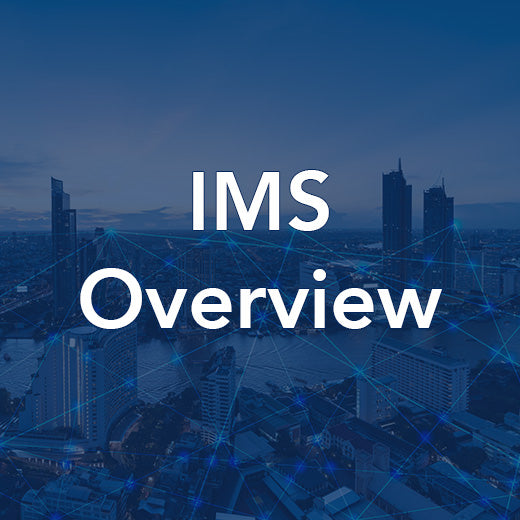
IMS Overview
Our IMS Overview Training Course is designed to provide participants with a solid foundational understanding of the IP Multimedia Subsystem (IMS) and its role in Next Generation Networking. This course offers an overview of the IMS architecture, including security, charging, and Policy and Charging Control (PCC), as well as an analysis of the main protocols associated with the IMS. Participants will also gain insights into IMS registration and session control procedures, along with a brief overview of the applications enabled by the IMS. This course serves as an ideal introduction to the IMS for those who do not require the in-depth coverage provided in our 3-day IMS and SIP course. Ideal for individuals looking to enhance their understanding of the IMS architecture and operation, particularly in relation to VoLTE, as well as those seeking an introduction to SIP, this course covers a range of topic areas. Participants will explore concepts such as the IMS framework, protocols used by the IMS, CSCFs and HSS roles, SIP basics, IMS architecture, online and offline charging, policy control and charging, and more. By the end of this training, participants will have a comprehensive understanding of the IMS and its key components, making them well-equipped to navigate the evolving landscape of Next Generation Networking. Who would benefit This session is for those aiming to better understand the architecture and operation of the IMS, potentially in relation to VoLTE, as well as those looking for an introduction to SIP. Prerequisites An understanding of packet switched domains in LTE, GPRS and UMTS networks and their functionality is an advantage. Topic Areas Include What is the IMS and why do we need it? The IMS Framework simplified Protocols used by the IMS IMS architecture, interfaces, operation and procedures Roles of the CSCFs and HSS What is the Session initiation Protocol (SIP)? SIP User location and Session Control Basic Concepts Session Establishment using a SIP Architecture SIP Routing Introduction to the IMS Architecture The CSCFs’ Roaming and Non-Roaming Architecture Call Session Control Functions (CSCFs) Circuit Switched interworking The Media Resource Function (MRF) Introduction to Border Control IMS Security aspects Online and Offline Charging Policy Control and Charging (PCC) The role of SIP, SDP and RTP in the IMS IMS Registration Principles and Authentication Voice over LTE (VoLTE) Emergency Call Architecture and Procedure Rich Communication Suite (RCS)
POA: Private Course
-
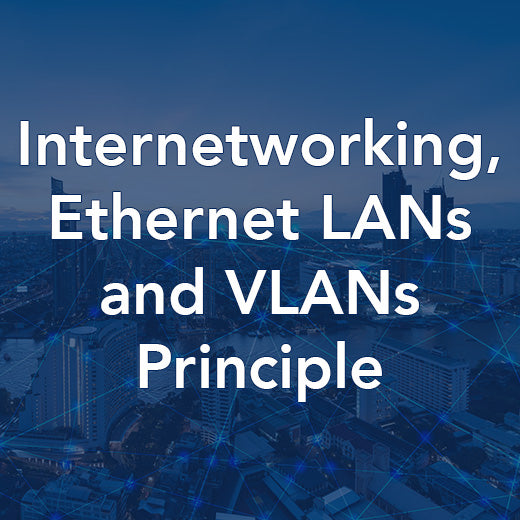
Internetworking, Ethernet LANs and VLANs Principles
In this comprehensive Internetworking Ethernet LANs and VLANs Principles training course, participants will gain a solid understanding of IP networking, with a specific focus on local LAN connections. The course delves into the intricacies of Ethernet technology, Switching, and Virtual LANs (VLANs), providing a well-rounded education on these fundamental networking concepts. Ideal for network engineers involved in planning, design, implementation, or support, as well as those in management roles, this course serves as a valuable introduction to LANs. It also serves as a stepping stone for those looking to expand their knowledge to include broader implementations of Ethernet in Metro Ethernet or Carrier Ethernet environments. Participants with an interest in IP networks and a basic understanding of IP networking terminology are well-suited for this course. Through a series of topic areas, including LANs, Layer 2 Switching, Ethernet Standards, MAC Addresses, and Virtual LANs (VLANs), attendees will leave with a comprehensive understanding of Ethernet LANs and VLANs principles. Who would benefit This course is aimed at any network engineers in planning, design, implementation or support as well as management roles. It provides the right level of introduction to the world of LANs which can also be a stepping stone to the broader implementations of Ethernet in the Metro Ethernet or Carrier Ethernet worlds. Prerequisites The only prerequisite would be an interest in IP networks and a basic understanding of some of the IP networking terminology. Topic Areas Include LANs, MANs and WANs The Link Layer Protocols Layer 2 Switching Ethernet Network Elements Ethernet Standards MAC Addresses LAN Cabling Combining Layer 2 and Layer 3 Systems STP Topology Spanning Tree Operation Virtual LANs (VLANs)
POA: Private Course
-
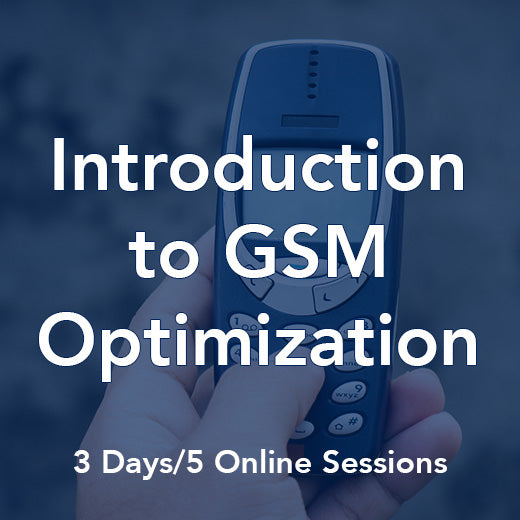
Introduction to GSM Optimization
Course Code: MB80 Who Would Benefit Those requiring an introduction to the principles and techniques related to optimization of the GSM air interface. Prerequisites A good understanding of the GSM Air Interface (Wray Castle course – MB50) and GSM cell planning principles. Course Contents Introduction and Overview Factors Affecting Network Access Dedicated Mode Considerations GSM Features and Techniques Cell Configurations Software Tools Practical Exercises
POA: Private Course
-
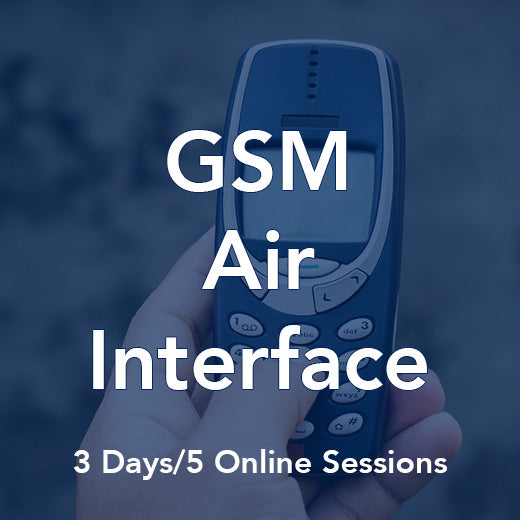
GSM Air Interface
Our GSM Air Interface Training Course is designed to provide a technical introduction to the world of GSM. This course covers the services, structure, and operation of a GSM mobile network, making it ideal for individuals new to or entering the GSM industry who require a technical overview of GSM network operation and its associated technologies. During this course participants will delve into various topic areas including GSM organizations and standards bodies, GSM services and service enablers, network architecture, GSM/GPRS identities, GSM EDGE radio access network, GSM channels, cell coverage and capacity, propagation issues, core network architecture, GPRS network architecture, idle mode procedures, dedicated mode procedures, GPRS procedures, GSM family evolution, real-world network configuration, and network sharing. By the end of the course, attendees will have a solid understanding of GSM technology and its operation, equipping them with the knowledge needed to excel in the GSM industry. Join us for our GSM Air Interface Training Course to enhance your skills and expertise in this field. Who would benefit Those new to or entering the GSM industry who require a technical overview of GSM network operation and its associated technologies. Prerequisites A basic understanding of cellular radio networks and associated technologies, as well as an ability to comprehend technical subjects, is an advantage. Topic Areas Include GSM organizations and standards bodies GSM services and service enablers Network architecture GSM/GPRS identities GSM EDGE radio access network GSM channels Cell coverage and capacity Propagation issues Core network architecture GPRS network architecture Idle mode procedures Dedicated mode procedures GPRS procedures GSM family evolution Real-world network configuration Network sharing
POA: Private Course
-
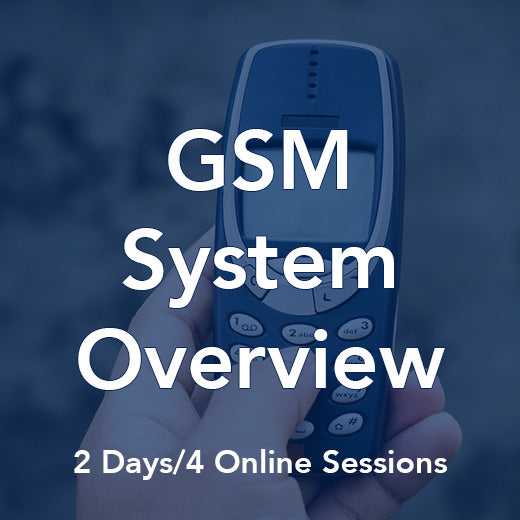
GSM System Overview
A technical introduction to the world of GSM. This course describes the services, structure and operation of a GSM mobile network. Our GSM System Overview Training Course is designed to provide a technical introduction to the world of GSM. This course offers a comprehensive overview of the services, structure, and operation of a GSM mobile network. Whether you are new to the GSM industry or looking to enhance your understanding of GSM network operation and associated technologies, this course is perfect for you. Over the course of 2 days and 4 live online sessions (0900-1230), participants will delve into key topic areas including GSM organizations and standards bodies, GSM services and service enablers, network architecture, GSM/GPRS identities, GSM EDGE radio access network, and more. With a focus on real-world network configurations and network sharing, this course will equip you with the knowledge and skills needed to excel in the GSM industry. Join us for our GSM System Overview Training Course and gain a solid foundation in GSM technology. With a basic understanding of cellular radio networks and associated technologies, as well as the ability to comprehend technical subjects, you will be well-prepared to navigate the complexities of GSM networks and drive innovation in the industry. Who would benefit Those new to or entering the GSM industry who require a technical overview of GSM network operation and its associated technologies. Prerequisites A basic understanding of cellular radio networks and associated technologies, as well as an ability to comprehend technical subjects, is an advantage. Topic Areas Include GSM organizations and standards bodies GSM services and service enablers Network architecture GSM/GPRS identities GSM EDGE radio access network GSM channels Cell coverage and capacity Propagation issues Core network architecture GPRS network architecture Idle mode procedures Dedicated mode procedures GPRS procedures GSM family evolution Real-world network configuration Network sharing
POA: Private Course
-
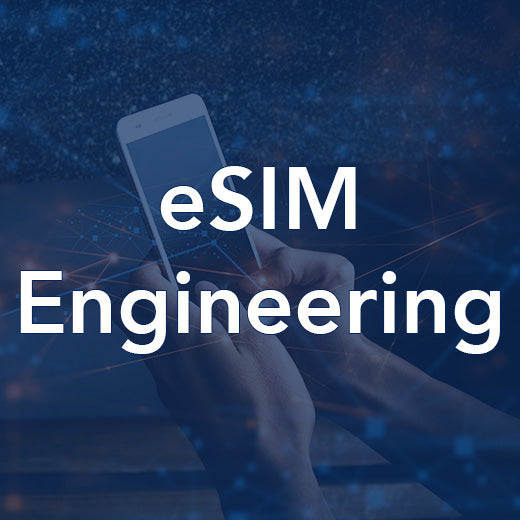
eSIM Engineering Overview
Our eSIM Engineering Overview Training Course provides a comprehensive technical overview of eSIM technology and the latest remote SIM provisioning specifications from GSMA. This course delves into the role of the SIM, the transition from physical to digital, system architectures for both M2M and Consumer applications, the evolution of eSIM, and a glimpse into the future of this technology. Engineers, product managers, and other professionals seeking to implement eSIM-based products and services will benefit greatly from this course. Participants are expected to have a general engineering background with some knowledge of GSM SIM technology. While not mandatory, a basic understanding of mobile networks would be advantageous. The course covers essential topics such as Introduction to eSIM, GSMA Consumer eSIM Specification, GSMA M2M eSIM Specification, GSMA Consumer eSIM Specification Enhancements, and The Future of eSIM. Who would benefit The course is intended for engineers, product managers and other staff who are looking to prepare for or actively roll out eSIM-based products and services within their organisations. Prerequisites A general engineering background with some knowledge of GSM SIM technology is assumed. A basic understanding of mobile networks would be desirable. Topic Areas Include Introduction to eSIM GSMA Consumer eSIM Specification GSMA M2M eSIM Specification GSMA Consumer eSIM Specification Enhancements The Future of eSIM
POA: Private Course
-

Cloud Computing
Our Cloud Computing Training Course provides a technical introduction to the fundamental techniques and protocols that support cloud computing services. Participants will gain insight into the various types of clouds that can be created and the wide range of 'X as a service' offerings available through cloud platforms. This course is ideal for engineering professionals, technical managers, and sales/marketing staff seeking a comprehensive technical overview of Cloud Computing. Participants should have a basic understanding of internet architecture and technologies to fully benefit from this course. Our expert instructors will cover essential topics such as 'What is ‘The Cloud’?', Cloud Architecture and Technologies, Advanced Cloud Architecture Technologies, Types of Cloud Service, Pros and Cons of Cloud Computing, and Telecoms Services and the Cloud. By the end of the course, participants will have a solid understanding of cloud computing principles and how they can be applied in a variety of industries. Who would benefit This course is suitable for engineering, technical management and sales/marketing staff who require a technical overview of Cloud Computing. Prerequisites A basic understanding of the architecture and technologies that support the internet would be beneficial. Course Modules: What is ‘The Cloud’? Cloud Architecture and Technologies Advanced Cloud Architecture Technologies Types of Cloud Service Pros and Cons of Cloud Computing Telecoms Services and the Cloud
POA: Private Course
-
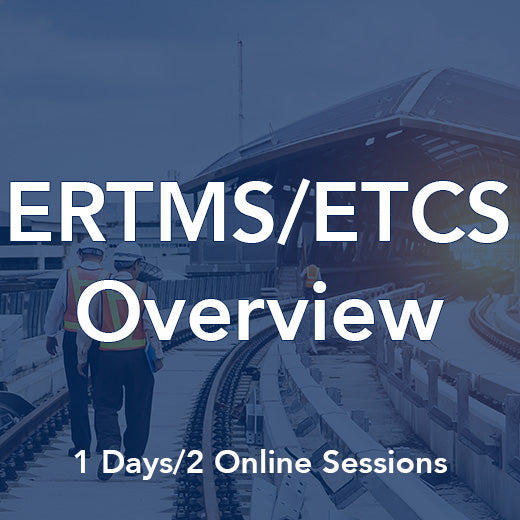
ERTMS/ETCS Overview
ERTMS/ETCS is a crucial system in the digitalization of the railway industry, aiming to increase capacity, reduce costs, lower carbon emissions, and enhance customer satisfaction. Our 1-day training course provides a comprehensive overview of ERTMS/ETCS for non-technical project managers in the railway sector. Participants will gain insights into the rationale, concept, installations, baselines, and specifications of ERTMS, as well as the system behavior, application levels, level transitions, trackside equipment, and more of ETCS. With a focus on essential topic areas such as signals, route, interlocking, on-board equipment, and vital computer systems, attendees will leave equipped with a solid understanding of ERTMS/ETCS. Whether you are looking to enhance your knowledge of the digital railway or seeking to stay ahead in the rapidly evolving railway industry, this course is designed to provide you with the necessary insights and expertise to navigate the complexities of ERTMS/ETCS effectively. Who would benefit This one day course is aimed at non-technical project managers that require an overview of ERTMS/ETCS. Prerequisites Delegates attending this course should be familiar with the railway industry. Topic Areas Include ERTMS Rationale and concept Standards organizations ERTMS Installations ERTMS Baselines ERTMS Specifications ETCS System behaviour ETCS Application levels ETCS Level transitions ERTMS Trackside equipment Train occupancy detection systems Signals, route and interlocking Multi-aspect signalling ERTMS On-board equipment European Vital Computer ERTMS DMI Position estimation Estimating the End of Authority Managing Movement Authorities ERTMS Operating Modes Supervision Train movements
POA: Private Course
-
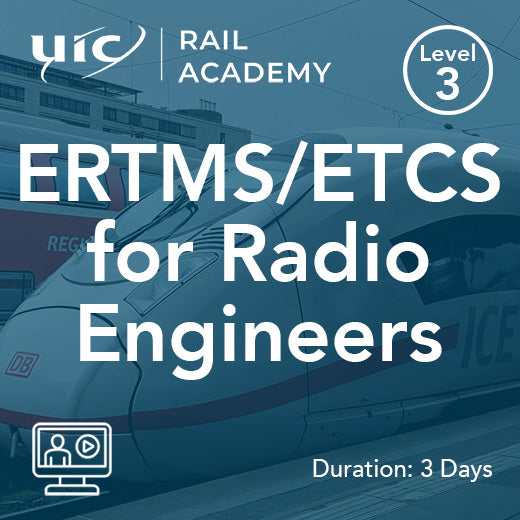
ERTMS/ETCS for Radio Engineers (Live)
The European Railway Traffic Management System (ERTMS) is a crucial rail project in Europe, aiming to replace disparate train control systems with the European Train Control System (ETCS). Our 3-day training course provides an in-depth look at ETCS and focuses on utilizing GSM-R with or without GPRS as a bearer for ETCS signaling. This course is part of the UIC Rail Academy and is certified by the Institution of Railway Signal Engineers (IRSE). Participants in this course should have a basic understanding of GSM-R networks. Topics covered include ERTMS standards and legislation, system architecture, operating modes, protocols, circuit-switched signaling, GPRS for ETCS, radio network optimization, and more. Upon completion, attendees will have a comprehensive understanding of how GSM-R technologies can support the implementation of ETCS in railway systems. For those looking for a more flexible learning option, this course is also available as a self-paced online training course. Visit our website to learn more about how you can enhance your knowledge of ERTMS/ETCS for radio engineers at your own pace. Part of UIC Rail Academy. Prerequisites Delegates attending this course should be familiar with the principles of GSM-R networks. Topic Areas Include ERTMS Standards and Legislation Basic System Description System Architecture ERTMS Operating Modes ERTMS/ETCS Protocols Circuit Switched Signalling Circuit Switched Connections GPRS for ETCS The GPRS Air Interface GPRS Procedures Transmission through the Network Radio Network Optimization Certified by Institution of Railway Signal Engineers (IRSE) The Institution of Railway Signal Engineers (IRSE) certifies that the syllabus for the ERTMS/ETCS for Radio Engineers course is appropriate for meeting the stated objectives of that course. For more information about the scope of the certification process provided by the IRSE please see the IRSE website www.irse.org. Also available as a Self-Paced Online Training Course, learn more
£2,660.00
-
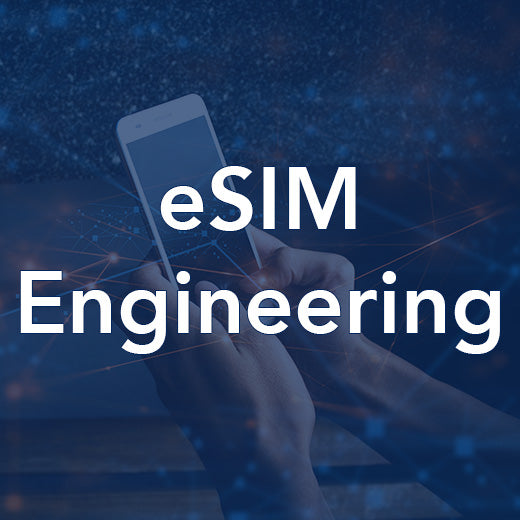
eSIM Engineering
The eSIM Engineering Training Course offered by Wray Castle provides a comprehensive technical overview of eSIM technology and the latest remote SIM provisioning specifications from GSMA. This course delves into the transition of the SIM from physical to digital realms, exploring unique system architectures for both M2M and Consumer applications. Participants will gain insights into the evolution of eSIM technology and a glimpse into the future developments in this field. Engineers, product managers, and other professionals seeking to implement eSIM-based products and services within their organizations will greatly benefit from this course. A general engineering background with some knowledge of GSM SIM technology is assumed, and a basic understanding of mobile networks would be advantageous. The course covers essential topics such as the introduction to eSIM, GSMA Consumer eSIM Specification, GSMA M2M eSIM Specification, enhancements in the Consumer eSIM Specification, and the future prospects of eSIM technology. Who would benefit The course is intended for engineers, product managers and other staff who are looking to prepare for or actively roll out eSIM-based products and services within their organisations. Prerequisites A general engineering background with some knowledge of GSM SIM technology is assumed. A basic understanding of mobile networks would be desirable. Topic areas include Introduction to eSIM GSMA Consumer eSIM Specification GSMA M2M eSIM Specification GSMA Consumer eSIM Specification Enhancements The Future of eSIM
POA: Private Course
-

DMR System Design
Course Summary The topics covered in this course will enable those working in radio system design, specification and optimization to plan and configure DMR networks. The course contains detailed descriptions of the key aspects of the DMR radio link including higher-layer signalling, protocol interactions and media processing aspects as well as lower-layer functions such as modulation, radio performance and channel coding. Our DMR System Design Training Course is designed to provide a comprehensive understanding of planning and configuring DMR networks for radio system design, specification, and optimization. This course covers key aspects of the DMR radio link, including higher-layer signaling, protocol interactions, media processing, modulation, radio performance, and channel coding. Engineers working in radio system design who require detailed knowledge of Tier I, Tier II, and Tier III DMR systems will benefit greatly from this training. Participants should have familiarity with designing mobile radio systems or have attended our Radio System Design course (RP1101) before enrolling in this training. The 2-day course consists of 4 live online sessions from 0900-1230, where industry experts will delve into topics such as DMR specifications, voice, short data, and data services, frequency allocation, numbering, dialing plans, protocol architecture, air interface Physical Layer, Data Link Layer, Call Control Layer, random access procedures, capacity and coverage planning, transmitter and receiver performance, and more. Join us for our DMR System Design Training Course to enhance your skills and knowledge in planning and configuring DMR networks for optimal performance and efficiency in radio system design. Who would benefit Engineers working or involved in radio system design who require a detailed understanding of the planning, optimization and configuration aspects of Tier I, Tier II and Tier III DMR systems. Prerequisites Familiarity with the principles and techniques of designing mobile radio systems, or previous attendance on the Radio System Design course (RP1101). Topic Areas Include Introduction to DMR specifications DMR voice, short data and data services Tier I, Tier II and Tier III operation and functionality DMR frequency allocation DMR numbering and dialling plans Overview of the protocol architecture Air interface Physical Layer (layer 1) Data Link Layer (layer 2) Call Control Layer (layer 3) Random Access procedures Control channel acquisition and retention Registration, power save and authentication Capacity and coverage planning DMR Transmitter and receiver performance Message, transmission and quasi-transmission trunking
POA: Private Course
-

AAA Diameter
Course Summary RADIUS is used essentially to introduce the topic and provide a progression towards Diameter with the main emphasis being on the newer Diameter protocol. The course will also delve into the deployment of Diameter as seen by modern telecoms in particular. After looking at Diameter in detail the course will review how it is being implemented into 3GPP’s IMS and LTE network architectures. Our AAA Diameter Training Course is a comprehensive program designed to provide engineers working in equipment manufacturing and network operations with a deep understanding of Diameter protocol. Over 2 days and 4 live online sessions, participants will delve into the intricacies of Diameter, its deployment in modern telecom networks, and its integration into 3GPP's IMS and LTE architectures. The course covers a range of topic areas, including an introduction to RADIUS and Diameter, Diameter transports, the Diameter base protocol and entities, Diameter operations and extensibility, Diameter accounting protocol, Diameter security, and its implementation in IMS and the Evolved Packet Core. Participants will gain valuable insights into the latest advancements in Diameter technology and its practical applications in the telecom industry. With no major prerequisites required, this course is ideal for professionals looking to enhance their knowledge of modern telecommunications networks and stay ahead in the rapidly evolving telecom landscape. Join us for this in-depth training program and take your expertise in Diameter protocol to the next level. Who would benefit This course is primarily designed for engineers working for equipment manufacturers and for network operators who are involved in equipment design, manufacturing, network planning, network optimization, strategy determination and deployment of RADIUS and Diameter technologies. Prerequisites There are no major prerequisites, but to maximise the benefits of this course a good understanding of the architecture of modern telecommunications networks including IMS and LTE would be advantageous as well as a reasonable understanding of the MAP protocol and the messages used to support a mobile device for registration and location updates. A grasp of SCTP as used in SIGTRAN would also be beneficial. Topic Areas Include Introduction to RADIUS and Diameter Diameter Transports The Diameter Base Protocol and Entities Investigating Diameter Base Protocol Diameter Operations and Extensibility Diameter Accounting Protocol Diameter Security Diameter in IMS Diameter in the Evolved Packet Core
POA: Private Course
-

Cell Planning for UMTS Networks
Course Summary Expand your cell planning skills with our Cell Planning for UMTS Networks training course. This 2-day course is designed for experienced GSM cell planners looking to transition into planning WCDMA networks. Gain a comprehensive understanding of the differences in techniques and tools required for successful UMTS network planning. Who would benefit from this course? Experienced cell planners seeking to enhance their skills in planning Frequency Division Duplex (FDD) UMTS networks. Prerequisites include prior experience with UMTS network operation and basic radio awareness, or previous attendance on our UMTS Air Interface course (MB2002). Topics covered in this course include the WCDMA planning philosophy, UMTS structure review, scrambling codes, coverage predictions, link budgets, HSPA link budgets, cell load analysis, cell breathing, traffic analysis, predictions and simulations, Monte Carlo simulations, and co-siting GSM and WCDMA equipment. Elevate your cell planning expertise with our Cell Planning for UMTS Networks training course. Who would benefit This course provides experienced cell planners with an introduction to the differences required in technique, skill sets and tools for planning Frequency Division Duplex (FDD) UMTS networks. Prerequisites Experience of UMTS network operation, as well as basic radio awareness, or previous attendance on the UMTS Air Interface course (MB2002). Topic Areas Include The WCDMA planning philosophy Review of UMTS structure Review of UMTS logical, transport and physical channels Scrambling codes WCDMA considerations Coverage predictions Link budgets HSPA link budgets Analysis of cell load Cell breathing Traffic analysis Predictions and simulations Monte Carlo simulations Co-siting GSM and WCDMA equipment
POA: Private Course
-

CDMA2000 Radio Access
Course Code: MB2103 Course Summary This course begins with an overview of CDMA2000™ origins, the key standardization work as well as general network architecture. The course continues with an engineering overview of CDMA operation in a 3G context; one of the underpinning technologies and is followed by a brief review of cdmaOne™. This 2-day CDMA2000™ Radio Access training course provides a comprehensive overview of CDMA2000™ technology, including its origins, key standardization work, network architecture, and engineering principles in a 3G context. Ideal for engineering staff working on CDMA access networks, this course covers the operation and capabilities of CDMA2000™ 1x and 1xEV-DO systems. Participants should have a good understanding of modern digital cellular communication techniques and some experience with cdmaOne/IS-95 operation. The course covers a range of topic areas, including the evolution of 3G network architecture, cdmaOne overview, CDMA principles in 3G systems, access and core network elements and interfaces, 1x and 1xEV options for CDMA2000™, radio link higher-layer protocols, Link Access Control (LAC) protocol, Medium Access Control (MAC) protocol, 1xEV-DO protocol stack, 1x and 1xEV-DO channels, 1x and 1xEV-DO physical layer structure, and system access, call processing, and handover. Join us for this in-depth training to enhance your understanding of CDMA2000™ Radio Access technology. Who would benefit Engineering staff working on CDMA access networks requiring an understanding of the operation and capabilities of the CDMA2000™ 1x and 1xEV-DO systems. Prerequisites A good understanding of modern digital cellular communication techniques and, ideally, some experience of cdmaOne/IS-95 operation. Topic Areas Include Evolution of 3G network architecture cdmaOne overview CDMA principles in 3G systems Access and core network elements and interfaces 1x and 1xEV options available for CDMA2000™ Radio link higher-layer protocols Link Access Control (LAC) protocol Medium Access Control (MAC) protocol 1xEV-DO protocol stack 1x and 1xEV-DO channels 1x and 1xEV-DO physical layer structure System access, call processing and handover
POA: Private Course
-

Cell Planning for LTE Networks
Course Summary An introduction to the changes required in the techniques, skill sets and tools for planning LTE networks. This includes link budgets, mixed traffic dimensioning, coverage considerations and tool configuration parameters. All aspects are reinforced through classroom exercises and planning-tool illustrations. Our Cell Planning for LTE Networks training course is designed to provide participants with the necessary skills and knowledge to plan LTE networks effectively. Over the course of 2 days, attendees will learn about LTE planning philosophy, coverage planning, link budgets, LTE cell parameters, RACH planning, traffic analysis, dimensioning for capacity, frequency planning, planning for VoLTE, predictions and simulations, co-siting issues with legacy technologies, and RF exposure limits. Through a combination of classroom exercises and planning-tool illustrations, participants will gain a comprehensive understanding of the changes required in techniques, skill sets, and tools for planning LTE networks. This course is ideal for individuals involved in cell planning, configuration, or optimization of LTE-based networks. It assumes existing knowledge of basic cell planning principles and familiarity with the cell planning role. By the end of the training, participants will be equipped with the necessary tools and techniques to effectively plan LTE networks and ensure optimal performance. Join us for this insightful and practical training course to enhance your skills and expertise in LTE network planning. Who would benefit This course is intended for those involved in cell planning, configuration or optimization of LTE-based networks. Prerequisites This course assumes existing knowledge of basic cell planning principles and familiarity with the cell planning role. Topic Areas Include LTE planning philosophy Coverage planning and link budgets LTE cell parameters RACH planning Traffic analysis Dimensioning for capacity Frequency planning Planning for VoLTE Predictions and simulations Co-siting issues with legacy technologies RF Exposure limits Includes exercises.
POA: Private Course
-

Broadband Access Technologies
Course Summary This course introduces delegates to the broadband technologies and access methods that are available to fixed- and mobile-network operators. Topics covered include ISPs, ADSL, ADSL2, DSL, VDSL and fibre-optic networks, as well as WiMAX, Wi-Fi, UMTS and LTE. The learning is underpinned by group exercises. Broadband access technologies are constantly evolving, and staying up-to-date with the latest advancements is crucial for network operators. Our Broadband Access Technologies Training Course is designed to provide delegates with a comprehensive understanding of various broadband technologies and access methods used in both fixed and mobile networks. From ISPs and DSL to fibre-optic networks, WiMAX, Wi-Fi, UMTS, and LTE, this course covers a wide range of topics essential for technical and semi-technical management staff in the telecommunications industry. Participants will delve into the broadband market, DSL technologies, fibre optic systems, fixed wireless access, satellite broadband, and much more. Group exercises are included to reinforce learning and provide practical insights into broadband deployment strategies. While a basic understanding of digital communications techniques is beneficial, it is not a prerequisite for this course. Equip yourself with the knowledge and skills needed to navigate the complex world of broadband access technologies by enrolling in our training course. Stay ahead of the curve and gain a competitive edge in the telecommunications industry with Wray Castle's expert-led training sessions. Who would benefit Technical and semi-technical management staff requiring an overview of the technologies and techniques employed by wired and wireless broadband access systems. Prerequisites A basic understanding of digital communications techniques would be an advantage, but is not essential. Topic Areas Include The broadband market DSL – technologies, architecture, access, backhaul Powerline broadband Fibre optic and cable systems Fibre to the home and cabinet Fixed wireless access systems Satellite broadband and high altitude platforms Wi-Fi hotspot, wide area and ‘municipal’ networks UMTS fixed and 3G mobile broadband Fixed and Mobile WiMAX LTE and UMB Broadband deployment strategies Includes group exercises.
POA: Private Course
-

5G Infrastructure and Operation
Our 3-day 5G Infrastructure and Operation Training Course is designed for engineers new to or already working in mobile communications. This course covers essential topics such as Introduction to 5G, Principles of the 5G New Radio, 5G Air Interface, Radio Access Network Architecture, Core Network Architecture, Data Transport, 5G Protocols, 5G Procedures, and Releases 16 and 17. Our expert trainers will provide practical insights and real-world examples to enhance learning and ensure participants are well-equipped to navigate the complexities of 5G networks. For those looking to further enhance their skills, we also offer an optional 5G Virtual Lab Module where participants can explore, test, optimize, and troubleshoot the 5G system in a fully emulated environment. Prerequisites This course is intended for engineers either new to, or already working in, mobile communications. Course Contents Introduction to 5G Principles of the 5G New Radio 5G Air Interface Radio Access Network Architecture Core Network Architecture Data Transport 5G Protocols 5G Procedures Releases 16 and 17 Optional 5G Virtual Lab Module Explore, Test, Optimise, and Troubleshoot the 5G System Deep dive into the key signalling scenarios in the 5G system and analyse the output to build a deeper understanding that goes beyond the theoretical. The lab is a fully emulated 5G System environment that enables you to experiment with the configurations for Network Functions and build customized settings for signalling scenarios that helps you to develop greater insight into the operation of the 5G System. Lab modules can be added to any relevant 5G course. Learn more and arrange a demo.
POA: Private Course
-

5G Security
The nature of 5G means that the security architecture and processes need to cover new aspects (when compared to previous 3GPP generations), including 5GNR/LTE Dual Connectivity, standardized interfaces for distributed gNB / RAN architectures, more tightly integrated Non-3GPP Access, and most significantly, the new Service Based Interfaces used within the 5G Core. The 5G Security course provides a comprehensive grounding in this expanded set of security requirements and mechanisms used in 5G. We start by considering the 5G architecture in order to better understand the overall security requirements for both the UE and network. We then build on the security architecture of 4G LTE, with relevant modifications and additions required for 5G, before focusing squarely on the additional features and procedures required to secure the 5G Core Network (Service Based Interface). Who would benefit This course is designed for engineers, managers and other personnel who have a need to acquire a technical overview of the security environment employed within 5G networks. It will also be of benefit to those in the wider technical community who have a need to understand the security protocols employed by advanced cellular networks. Prerequisites An understanding of 4G (and legacy 2G and 3G) security procedures would be an advantage as would a basic understanding of 5G and / or LTE network architecture and functionality. Topic Areas Include 5G Architecture and the Service Based Interface 5G Security Architecture and Authentication and Key Agreement Security and the Service Based Interface (including SEPP)
£980.00
-

5G Service Based Architecture and Core Network
Our 5G Service Based Architecture and Core Network Training Course is designed to provide a comprehensive understanding of core network functions within the SBA, as well as the protocols and technologies that support the 5G Core. Through example procedures and in-depth exploration of the Service Based Interface (SBI) and Service APIs, participants will gain valuable insights into key 5G enabling principles such as virtualization and network slicing. Additionally, the course covers security on the SBI, introducing new network functions and techniques that enhance the security features of the core network domain. Ideal for professionals involved in the design, deployment, and development of 5G Service Based Architecture and the 5G Core, this technical course requires some prior knowledge or experience with the 5G system from a technical perspective. Topics covered include 5G introduction and deployment options, core network functions, supporting protocols and technologies, SBI security, and more. Participants will benefit from live online sessions led by industry experts, providing a dynamic and interactive learning experience. For those looking to explore, test, optimize, and troubleshoot the 5G system beyond the theoretical, we also offer an optional 5G Virtual Lab Module. This fully emulated environment allows participants to experiment with configurations for Network Functions and customize settings for signaling scenarios, providing a hands-on approach to developing a deeper understanding of the operation of the 5G system. Who would benefit This course is designed for those involved in the design, deployment and development of the 5G Service Based Architecture and the 5G Core. Prerequisites This is a technical course, so experience or knowledge of the 5G system from a technical perspective would be an advantage. Topic Areas Include 5G Introduction and Deployment Options The 5G Core Network Functions 5G Core Supporting Protocols and Technologies The Service Based Interface (SBI) and Service APIs Explained Procedures Deployment options SBI Security Optional 5G Virtual Lab Module Explore, Test, Optimise, and Troubleshoot the 5G System Deep dive into the key signalling scenarios in the 5G system and analyse the output to build a deeper understanding that goes beyond the theoretical. The lab is a fully emulated 5G System environment that enables you to experiment with the configurations for Network Functions and build customized settings for signalling scenarios that helps you to develop greater insight into the operation of the 5G System. Lab modules can be added to any relevant 5G course. Learn more and arrange a demo. Also available as a Self-Paced Online Training Programme, learn more.
POA: Private Course
-

5G Technologies, Services and Markets
Course Summary This course is a non-technical introduction to the 5G mobile communication system, including its capabilities, general structure and operation, as well as its position as a development of previous technologies. The course also covers the place that 5G holds in the telecommunications market, and how that is developing. This 1-day training course is designed to provide a comprehensive overview of 5G technologies, services, and markets. The course covers the basics of 5G mobile communication systems, including their capabilities, structure, and operation, as well as their evolution from previous technologies. Participants will also gain insights into the current landscape of the telecommunications market and the role that 5G plays in shaping its future. Ideal for non-technical professionals in the mobile or fixed telecommunications sector, this course requires no prior technical knowledge but some familiarity with the industry would be beneficial. Topics covered include an introduction to 5G, market drivers, use cases, performance objectives, key features, network architectures, voice services, industry players, standardization, and the relationship between 5G, LTE, and Wi-Fi. By enrolling in this course, participants will gain a solid understanding of 5G technologies and their impact on the telecommunications industry. Stay ahead of the curve and enhance your knowledge with this engaging and informative training opportunity. Who would benefit This course is intended for non-technical professionals either new to, or already working in, the mobile or fixed telecommunications sector. Prerequisites No technical knowledge is assumed but some familiarity with the telecommunications industry would be beneficial. Topic Areas Include Introduction to 5G Market drivers for 5G Use cases for 5G Performance objectives and spectrum requirements Concepts and key features of 5G Architecture of the core and radio access networks of 5G Voice services in 5G Key industry and market players Standardisation and timelines for 3GPP and the ITU 5G, LTE and Wi-Fi – a holistic approach
POA: Private Course





























































